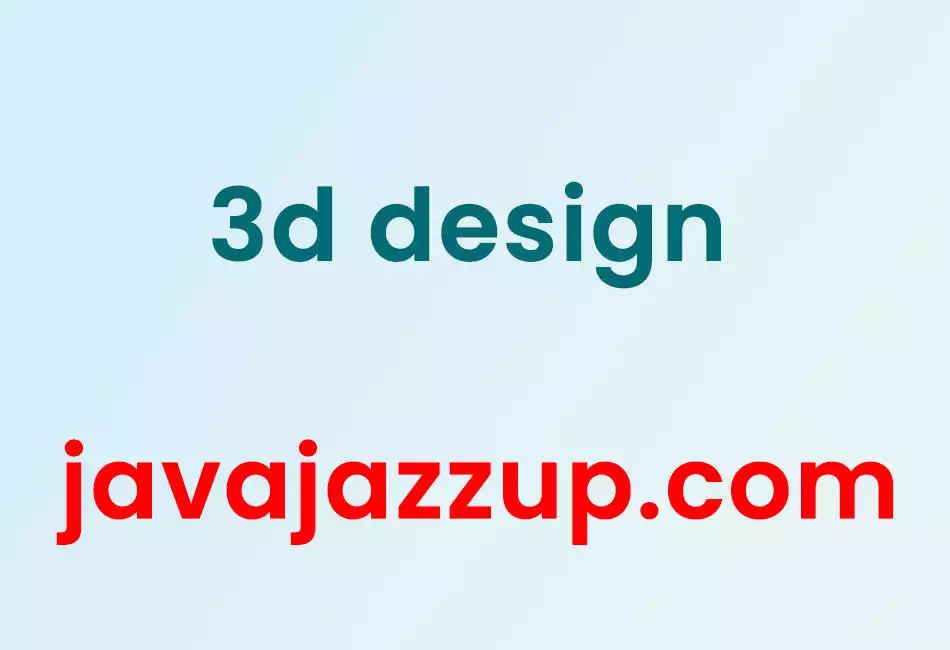3d design
3d design
3D Design: Unleashing Creativity in a Three-Dimensional World

In today's digital age, the world of design has taken a giant leap forward with the advent of 3D design. Gone are the days when designers were limited to creating flat, two-dimensional images. With 3D design, artists and creators can now bring their imagination to life in a three-dimensional space, revolutionizing the way we perceive and interact with visual content.
So, what exactly is 3D design? In simple terms, it is the process of creating three-dimensional objects or environments using computer software. Unlike traditional design methods, which rely on paper and pencil or 2D software, 3D design allows designers to build virtual models that can be viewed from any angle, giving a realistic representation of the final product.
One of the most significant advantages of 3D design is its ability to provide a more immersive and engaging experience. Whether it's designing a product, creating a virtual environment, or even developing characters for video games or movies, 3D design allows designers to add depth, texture, and realism to their creations. This added dimensionality enhances the overall visual appeal and captivates the audience, making it an invaluable tool for marketers, architects, engineers, and artists alike.
The process of 3D design begins with the creation of a digital model using specialized software. Designers can start from scratch or use pre-existing templates and modify them to suit their needs. The software provides a range of tools and features that enable designers to manipulate shapes, textures, colors, and lighting to achieve the desired effect. The level of detail and precision that can be achieved in 3D design is truly remarkable, allowing designers to create intricate and lifelike objects that were once only possible in the physical world.
One of the key aspects of 3D design is the ability to render the final model. Rendering is the process of converting the digital model into a realistic image or animation. This is where the magic happens, as designers can apply materials, textures, and lighting effects to bring their creations to life. The rendering process can be time-consuming, especially for complex models, but the end result is well worth the effort. The level of realism that can be achieved through rendering is astonishing, making it difficult to distinguish between a 3D model and a photograph of a real object.
The applications of 3D design are vast and diverse. In the field of architecture, 3D design allows architects to create virtual models of buildings and spaces, enabling clients to visualize the final result before construction even begins. This not only saves time and money but also allows for better communication and collaboration between architects, clients, and contractors.
In the world of product design, 3D design has revolutionized the way products are conceptualized and developed. Designers can create virtual prototypes, test different materials and textures, and even simulate real-world conditions to ensure the functionality and durability of the product. This not only speeds up the design process but also reduces the need for physical prototypes, saving resources and minimizing waste.
The entertainment industry has also embraced 3D design with open arms. From animated movies to video games, 3D design has become an integral part of the creative process. Characters and environments can be brought to life with stunning realism, immersing the audience in a virtual world like never before. The level of detail and visual effects that can be achieved through 3D design has elevated the quality of entertainment and raised the bar for creativity.
But 3D design is not limited to professionals or industries. With the advancement of technology, 3D design software has become more accessible to the general public. There are now user-friendly programs available that allow anyone with a creative spark to try their hand at 3D design. This has opened up a whole new world of possibilities for hobbyists, students, and aspiring artists, empowering them to unleash their creativity and bring their ideas to life.
In conclusion, 3D design has revolutionized the world of design by providing a three-dimensional canvas for artists and creators. Its ability to add depth, texture, and realism to visual content has transformed the way we perceive and interact with digital media. From architecture to product design to entertainment, 3D design has become an indispensable tool for professionals and a source of inspiration for amateurs. As technology continues to advance, the possibilities of 3D design are limitless, and we can only imagine what the future holds for this exciting field. So, let your imagination run wild and dive into the world of 3D design – a world where creativity knows no bounds.
Ads